Acronym for Hypertext Transfer Protocol, HTTP is the protocol used to send and receive information on the web, and it’s based on requests and responses between clients and servers. The basic operation of HTTP goes as follows: the client — a browser or device making a request — requests a certain resource by sending an information packet containing some headers to a URL. The server receives this information and returns a response.
How it all began
HTTP has been in use since 1991. The first version of the protocol, called HTTP/0.9, was a simple data transferring protocol in ASCII text format over the Internet. Then, the HTTP/1.0 version was released in 1996 to meet the need to transfer not only text. Richer data, request and response metadata, and content negotiation, for example, were now considered.
The third version, 1.1, was released in 1999. Its release is considered a milestone that set the Internet standard. The HTTP/1.1 protocol, besides solving numerous ambiguities of version 1.0, introduced critical performance improvements.
From the 2000s on, through the boom in Internet usage, the number of devices connected to it grew exponentially. With this exorbitant growth came the need for performance improvements. That’s how SPDY was born in 2009, a protocol created by Google engineers to help overcome HTTP/1.1 performance problems.
These moves caught the attention of the HTTP Working Group (HTTP-WG). In 2015, 16 years after the release of HTTP/1.1, HTTP/2 was born. Without changing the protocol’s semantics, significant improvements were achieved in information transport performance, as well as lower latency and higher throughput.
HTTP/2 Main Features
To better understand HTTP/2, take a look at the following characteristics.
Single connection and multiplexing
HTTP/1.1 is a sequential protocol, where the browser opens only one TCP connection, requests one file, and only after receiving the file it moves to the next one. If a file is too large, or the server processing is too slow, the page can crash. To minimize this issue, browsers usually open multiple connections, between 6 and 8, per server. In HTTP/2, on the other hand, a TCP connection will be persistent and only one per source is needed since parallel requests and responses can request/receive all the necessary files.
This brings a reduction in processing and memory consumption, a reduction in network operating cost, and increased usability. The result is reduced network latency and lower hardware and software costs.
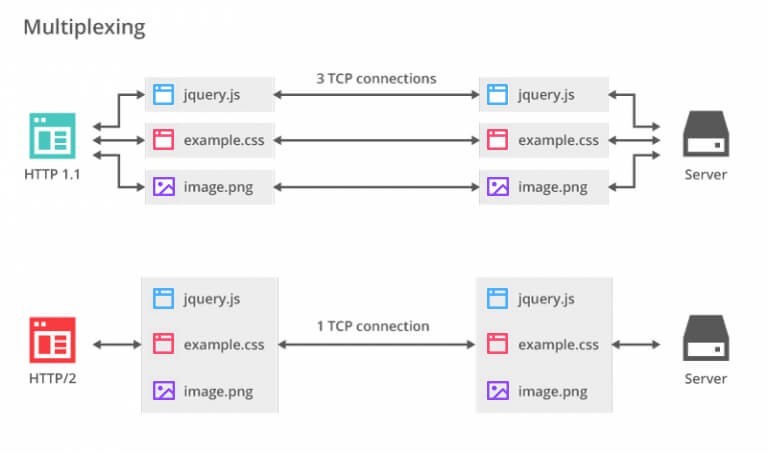
Binary framing layer
This is the core of all HTTP/2 performance improvements, determining how HTTP messages are encapsulated and transferred between client and server. The encoding mechanism has been redesigned without changing the semantics of methods, verbs, and headers. Communication is broken into frames, over a single TCP connection.
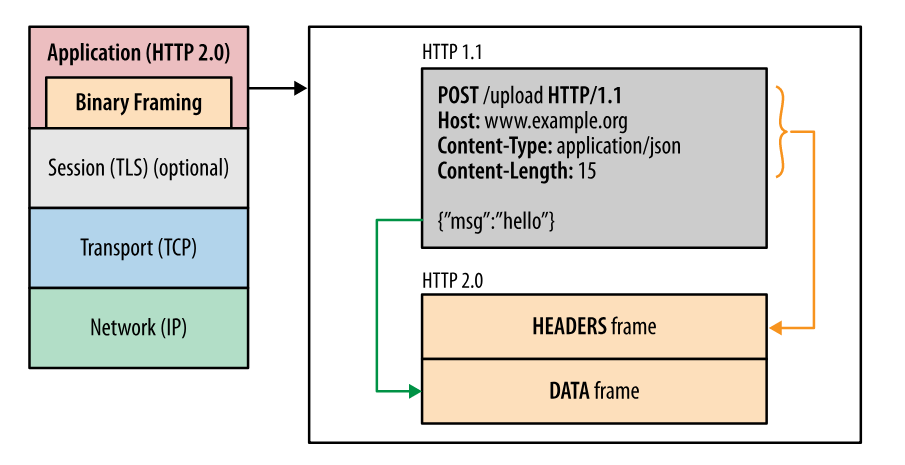
Request Prioritization
It enables the browser to request all elements when discovered, communicating to the server its intention to prioritize any of them. This is done through dependencies and stream weights. An example of this is when CSS files and JS files are requested, that with HTTP/2 the browser will prioritize CSS files first, even if its request in DOM order comes after the JS.
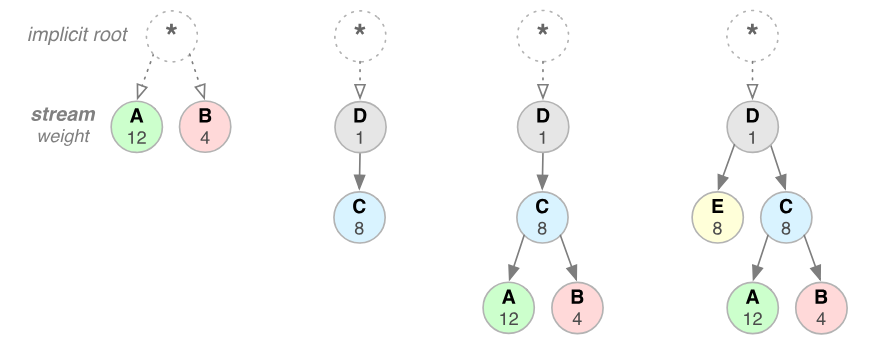
Server Push
It allows the server to send multiple responses to the client, from a single request, without the client explicitly asking for it. Imagine the following scenario: a web browser requests a page’s HTML file; the server then responds with the requested file and also sends the CSS file, JavaScript, icons, and other things.
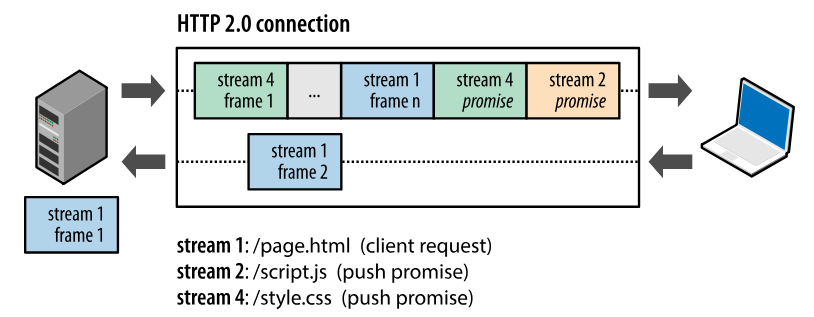
Automatic compression
HTTP requests have headers with important information about the resource and its properties. With HTTP/2 the headers are compressed using the HPACK algorithm, thus reducing the size of each transfer and maintaining and updating an indexed list of the header fields seen earlier. In addition, data compression via GZIP, which needs to be enabled in HTTP/1.1, became standard in version 2.
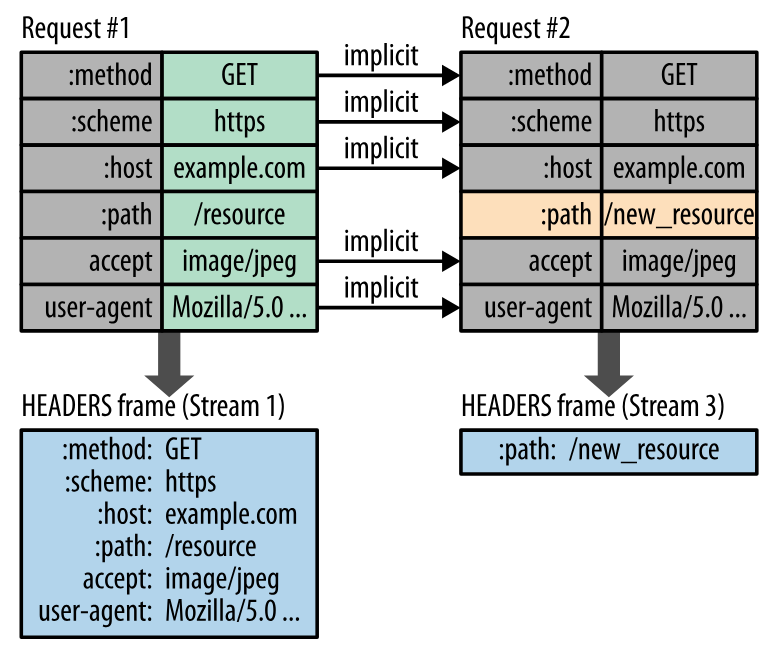
Data security and encryption
The HTTP/2 protocol has been implemented to work with or without encryption. However, all major browsers declared that they will only support HTTP/2 with encryption, requiring the use of an SSL certificate.
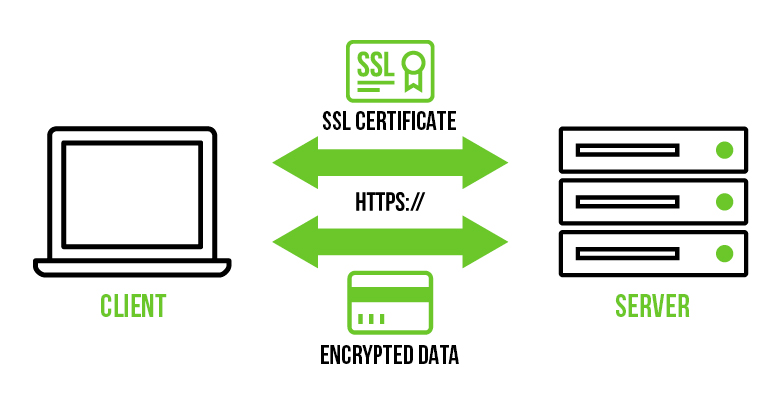
[IMAGEM: Client, SSL Certification, Encrypted Data, Server]
Conclusion
Web applications like Fusion Cloud, through the implementation of HTTP/2, are showing significant performance improvements, with a big difference in page load times, thus enabling a reduction in hardware costs and a better browsing experience for users.
References:
Wikipedia, Google Web Fundamentals, KingHost, HPBN, Apiki.





